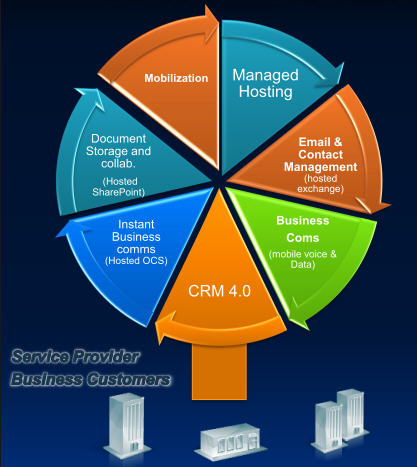Related sites:
Newsletter: Perspectives on Power Platform
Company: Niiranen Advisory Oy

This week I attended the fifth annual CRM user days by Mepco Oy. This time the line-up included also international guests from Microsoft US and UK, namely Kim Smith and Patrick Pando. Not surprisingly, their presentations included a hefty dose of the MS Software-plus-Service mantra, presented from the Dynamics CRM perspective. The slides had a few interesting points that I thought were worth blogging about.
Both Kim and Patrick stated that the pull from the customers’ side on Microsoft offering an online version of Dynamics CRM has been tremendous. Given that CRM has been designed as a pure web application since day one, it’s no wonder that especially smaller companies today would be questioning what exactly they need their own server for, since so much of the competition is using a purely hosted strategy in delivering their flavor of customer relationship management apps.
Although it may seem like Microsoft has been somewhat conservative in their efforts to roll out their CRM Online offering, this may rather be an indicator of how serious they actually are about ensuring that their cloud experience lives up to the hype. The following quote from Brad Wilson highlights the strategic importance of CRM Online to Microsoft:
“In three years, 100% of our CRM business will start with an Online experience.”
To me that prediction makes perfect sense. Gone are the days when you could sell business software armed with a website full of marketing bullets and some on-site sales presentations with selected screen shots of how the application looks like, “if you buy” or “if you commit to a PoC”. Today the rules of the game are quite simple: give me a demo account and a URL to log in. What, your application requires me to install something? Hmm, well maybe I’ll try it sometime later then.
If you can present your application through a browser, getting your foot through the door can be so much easier. This seems to be precisely what Microsoft is planning to use CRM for. Patric’s presentation included a cycle that presented the typical order in which they expect the customers to adopt cloud based services. Microsoft considers Dynamics CRM to be the most likely entry point for companies to try hosted replacements for their existing business applications. Once the customer data is in the cloud, presence (OCS) and document collaboration (SharePoint) are quick to follow into the palette. After that, having your own Exchange will start to feel outdated etc. etc.

Will this gateway theory work in reality and bring new business to Microsoft? If anything, it does at least sound like a plan where the phases are in the correct order. There would appear to be fairly little functional benefits in moving existing monolithic services like Exchange into the cloud, but going there with a customizable and extensible platform such as Dynamics CRM offers a whole lot more opportunities. As long as CRM Online manages to build an attractive ecosystem around the core product and pull in services that demonstrate the benefits of building integration in the cloud, as opposed to behind the firewalls, it has a great chance for stealing the momentum in business application development.
Will Microsoft make more money out of SaaS than it’s traditional licensing model? That may not be the right question to ask. In order to keep on makin’ money like they have, MS must first find a way to fight the new competition, just like it fought off Lotus & WordPerfect back in the days when the battle was on the C-drive. If Dynamics CRM gains more mind share as a result of this brand new warfare, so be it.
Patric ended his presentation with the following bullets on the key considerations companies should focus on when planning their investment in the cloud:
While many of the points may sound somewhat obvious, they are all too easy to forget at the high peak of the hype cycle that cloud computing has been riding on. Yes, the cloud will change almost everything, except the mistakes that we will repeat all over again.
[…] I mentioned in my previous post, cloud-based services are quickly becoming the default mode that people expect a CRM application to […]